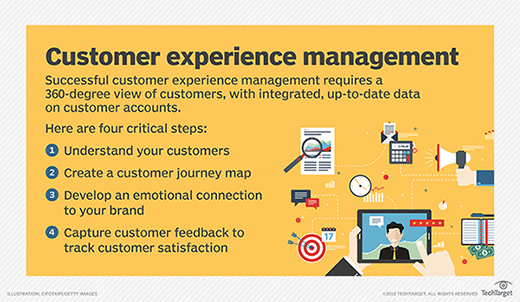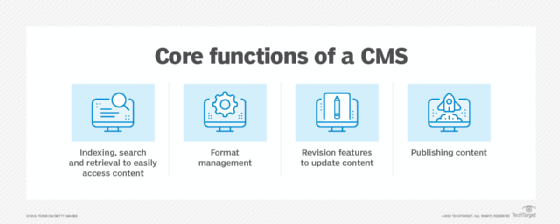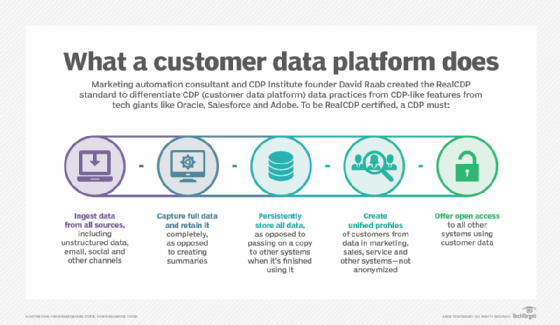What is digital experience (DX)?
Digital experience (DX), also known as digital user experience (UX), is the take-away feeling an end user has after an experience in a digital environment or with a digital technology or device. Websites, mobile apps, social media sites, e-commerce sites, wearable devices and smart devices all provide a DX.
A digital experience is what users feel when they interact with an organization or application via one or more digital technologies. By itself, technology can't drive DX; a user's digital experience depends on how organizations use a technology to improve customer experience (CX).
To that end, organizations create a DX strategy and design a DX that is relevant and personalized to the users they wish to attract and retain. Often, a DX design makes use of different marketing channels. This sort of omnichannel strategy ensures end users enjoy a great DX with a brand's digital ecosystem.
The design process considers several factors, such as accessibility and ease of use. It uses data from many sources, including user research and digital touchpoints. Performance metrics are used to ensure an effective digital customer experience. Usability testing and optimization also help improve conversion rates and ensure business success.

The importance of digital experience
DX is a major part of the brand journey for almost all users in both B2B and B2C settings. A poor DX can result in customers losing interest and even severing their relationship with a brand. Disappointed customers can also negatively influence other customers' opinion of a brand.
To avoid customer churn and to boost customer acquisition and customer retention, companies must create and deliver a relevant, contextual and intelligent digital CX that addresses customer needs and resonates with each one in a personal way.
Focusing on the digital experience and design helps businesses connect with their target audience, engage with prospective and current customers, improve customer satisfaction and enhance other stakeholder experiences, such as employee experiences. A DX that provides high-quality, personalized experiences can be a crucial competitive advantage and revenue driver. It can also secure customer loyalty and brand recognition and advocacy.

Pros and cons of DX
In the past, customer interaction with a business was largely in person, on the phone or using traditional mail. DX technology has opened doors to products and services that can be examined, evaluated and acquired in the comfort of one's home or on the go using a mobile device. The benefits of DX technologies are felt in the following ways:
- Better product strategy. Data from digital sources, when properly managed and analyzed, can be instrumental in designing new products, designing marketing campaigns, and updating and phasing out legacy products.
- Improved customer management. With the knowledge gained from DX, UX and CX systems, organizations know what their customers want, when they want it, how it should look and what they will pay for it.
- Less customer churn. With better management, customer retention is one of the most important outcomes of DX and related initiatives.
- Increased profits. Organizations that adopt DX and related technologies to enhance the overall user experience are likely to have greater success in the market and increased revenue and profit.
On the negative side, DX and related programs can be costly and require specialized expertise and ongoing attention to ensure they're performing properly. Failure to accurately capture company goals for marketing and product development can result in DX systems that produce the wrong results.
The expanding scope of digital experience
Traditionally, DX was the province of web designers and web content management. Designers and content managers focused mainly on aspects such as the colors, layout, navigability and performance of a webpage to improve a user's DX.
These elements still drive DX, but other factors also play a key role, including the following:
- How intuitive a page or mobile app is.
- Efficiency with which users can complete actions, such as how many clicks or swipes are required.
- How well integrated an app or page is with other applications.
As the sophistication of online environments has grown and diversified beyond a webpage, the scope of DX has broadened. Now it also encompasses other digital channels, devices and applications, such as wearable computers, mobile apps, virtual assistants, software and applications that incorporate virtual reality and augmented reality capabilities.
Today, DX designers are concerned with usability of their applications, products and services. They must consider the perspective of a user who has many devices and possibly multiple online or digital identities in their consumer and professional lives.

Digital experience platforms
Digital experience management can be challenging, especially in omnichannel environments. A digital experience platform (DXP) can simplify the effort, enhance operational effectiveness and improve the productivity of DX teams. A DXP provides an integrated set of tools that let organizations design, manage, deliver and optimize DX for their customers and users across omnichannel or multichannel environments. It helps businesses accelerate digital transformation initiatives and deliver rich omnichannel DX to every user.
By using a DXP, companies can deliver useful content to users and customers across multiple touchpoints. These include websites, mobile apps, social media pages, contact centers, chatbots, e-commerce sites, point-of-sales systems, internet of things devices (IoT devices), smart devices and digital signage.
Companies that use a DXP are better able to design and deliver consistent digital interactions to their target customers and lead them toward a particular outcome. Content on all the organization's channels plays a role in improving a user's DX.
In addition to content dissemination, a DXP also helps with digital marketing automation. It collects user data and feedback that lets an organization create content that resonates with its users and deliver unique, on-brand DX to increase interest and loyalty.
Key components of digital experience platforms
Since content creation and dissemination is an important function of DXPs, most DXPs include a content management system (CMS) for creating and managing website content. Some DXPs include capabilities for digital asset management, which streamlines the creation, storage, retrieval and distribution of visual content across various channels.
Advanced DXPs offer artificial intelligence (AI)-assisted analytics and workflows to collect and visualize customer data, generate insights from the data and use the insights to improve DX and CX. AI-based DXPs can automate processes and create DXs that feel natural to customers and other users.
Some platforms include customer communication management features. CMMs create, deliver, store and retrieve outbound customer communications across multiple channels for various purposes. These can include marketing, payment notifications, new product introductions, renewal notifications and other indications of customer behavior.
As part of these platforms, centralization simplifies the task of content creation and omnichannel distribution. It enables marketing, sales, CX, customer support and other teams to track customer engagement and customer relationships across various channels in the omnichannel stack.
Other tools to drive and improve DX
In addition to DXPs, companies use customer data platforms to deliver personal, memorable digital experiences . A CDP is software that collects customer data from a range of sources to help organizations build a comprehensive, coherent view of each customer. CDPs help companies better understand their users and their needs and develop personalized customer experiences.
Another important tool is a digital twin, which is a virtual representation of a system that allows businesses to simulate and analyze customer journeys and design more personalized DX and CX. A CMS -- if it's not already part of the DXP -- provides a unified way to create content that can then be distributed to numerous digital channels.

The future of digital experience
Most people expect some level of digital experience when buying a product or service. It might be as simple as seeing a YouTube advertisement or sending an email to place an order. Or it can be highly complex, involving numerous systems and technology platforms that collect and analyze various forms of customer data to provide an engaging customer experience.
Advances in technology, such as AI use, are likely to make DX increasingly part of people's real-time commercial lives.
Digital experience platforms grew out of web experience management platforms and content management systems. Discover more about DXPs.




